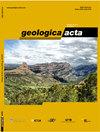Hybridization between I-type and S-type granites in the Ordovician Famatinian magmatic arc, Tafí del Valle, Tucumán, NW Argentina.
IF 2
4区 地球科学
Q2 GEOLOGY
引用次数: 5
Abstract
In the Tafi del Valle region, in northwestern Argentina, several intrusive bodies of lower Paleozoic age were emplaced in the metasedimentary Puncoviscana Formation, belonging to the Sierras Pampeanas. Four intrusive bodies outcrop in the study area: La Ovejeria, El Infiernillo, Loma Pelada and Los Cuartos. La Ovejeria and El Infiernillo intrusive bodies represent the I-type magmatism according to their major element contents and show cotectic evolutions similar to those described by Famatinian I-type batholiths. These moderately peraluminous adakitic trondhjemites have characteristic high Sr/Y ratios and low Fe 2 O 3 +MgO+MnO+TiO 2 contents. They are related to high-pressure conditions at the source, where dehydration melting of basaltic rocks may be involved and garnet is retained in the residue leading to generation of HREE depleted melts. The Loma Pelada granites show characteristics of S-type magmatism (low CaO and MgO, and high SiO 2 and K 2 O contents) typical of granites segregated in the last stages of magmatic differentiation, or anatectic granites. They show an increasing peraluminosity due to garnet entrainment and they are related to the anatectic melts generated in the Puncoviscana Formation. Both the Loma Pelada and Los Cuartos granitoids include samples with intermediate geochemical characteristics that range between those of the El Infiernillo and La Ovejeria and the regional metasedimentary rocks. These characteristics could be explained by assimilation processes involving the I-type intrusive magmas and the metasedimentary host rocks or by hybridization processes between trondhjemitic I-type magmas as La Ovejeria and El Infiernillo and anatectic S-type melts.阿根廷西北部图库曼Tafídel Valle奥陶纪法马汀期岩浆弧中I型和S型花岗岩的杂交。
在阿根廷西北部的Tafi del Valle地区,属于Sierras Pampeanas的变质沉积Puncoviscana组中侵位了几个下古生代的侵入体。研究区有四个侵入体露头:La Ovejeria、El Infiernillo、Loma Pelada和Los Cuartos。La Ovejeria和El Infiernillo侵入体根据其主要元素含量代表I型岩浆作用,并显示出类似于法马汀I型岩基所描述的共晶演化。这些中等过发光的adakitic黄铁矿具有高的Sr/Y比和低的Fe2O3+MgO+MnO+TiO2含量。它们与源头的高压条件有关,在高压条件下,可能涉及玄武岩的脱水熔融,石榴石保留在残留物中,导致HREE贫化熔体的产生。Loma Pelada花岗岩表现出S型岩浆作用的特征(低CaO和MgO,高SiO2和K2O含量),这是在岩浆分化的最后阶段分离的花岗岩或深熔花岗岩的典型特征。它们显示出由于石榴石夹带而增加的过光度,并且它们与Puncoviscana地层中产生的深熔熔体有关。Loma Pelada和Los Cuartos花岗质岩石都包括具有中等地球化学特征的样本,其范围介于El Infiernillo和La Ovejeria以及区域变质沉积岩的样本之间。这些特征可以通过涉及I型侵入岩浆和变质沉积宿主岩的同化过程来解释,也可以通过La Ovejeeria和El Infiernillo等三方I型岩浆与深熔S型熔体之间的杂交过程来解释。
本文章由计算机程序翻译,如有差异,请以英文原文为准。
求助全文
约1分钟内获得全文
求助全文
来源期刊

Geologica Acta
地学-地质学
CiteScore
2.50
自引率
6.70%
发文量
13
审稿时长
>12 weeks
期刊介绍:
- Relevant conceptual developments in any area of the Earth Sciences.
- Studies presenting regional synthesis.
- Thematic issues or monographic volumes presenting the results from one or more research groups.
- Short papers reflecting interesting results or works in progress.
- Contributions and results from Research Projects, Workshops, Symposiums, Congresses and any relevant scientific activity related to Earth Sciences.
- Geologica Acta aims to stimulate rapid diffusion of results and efficient exchange of ideas between the widespread communities of Earth Science researchers (with special emphasis on Latinamerica, the Caribbean, Europe, the Mediterranean
 求助内容:
求助内容: 应助结果提醒方式:
应助结果提醒方式:


